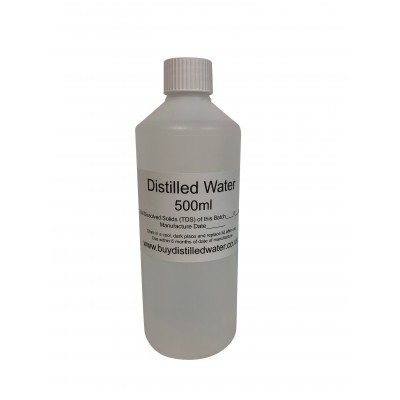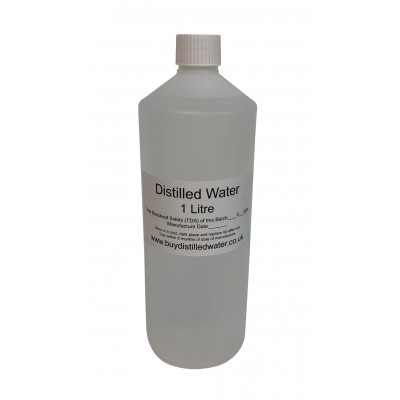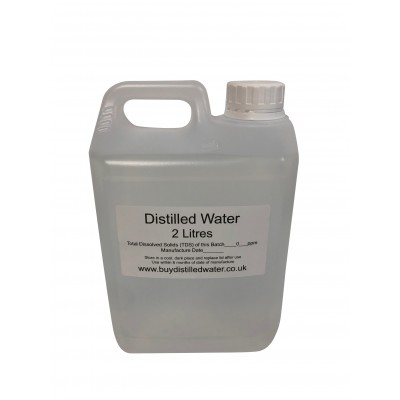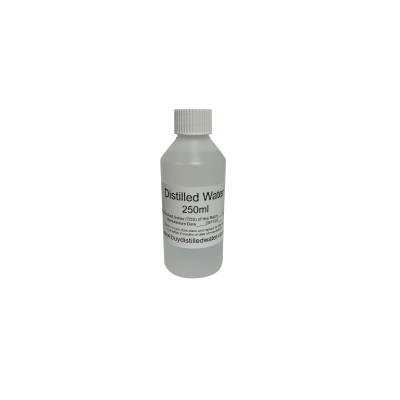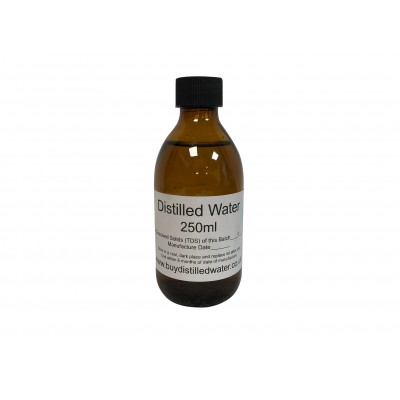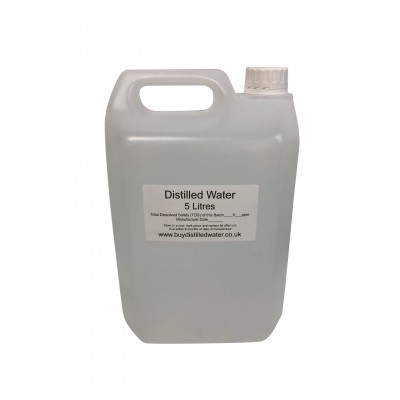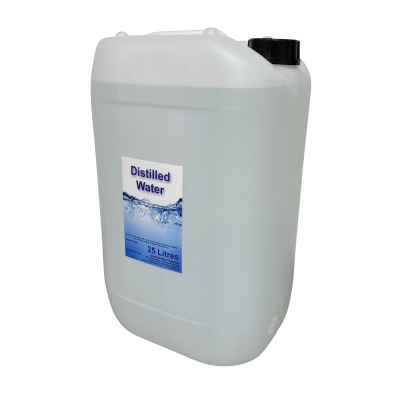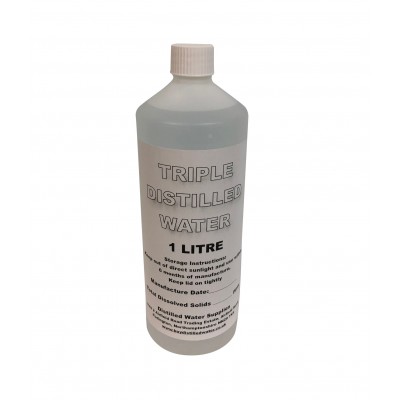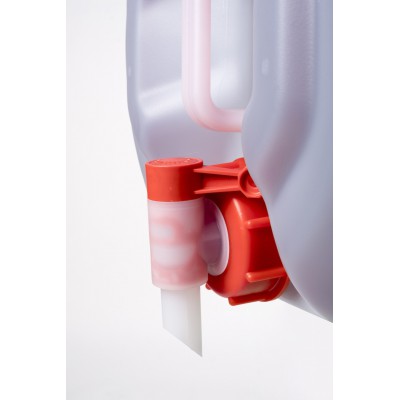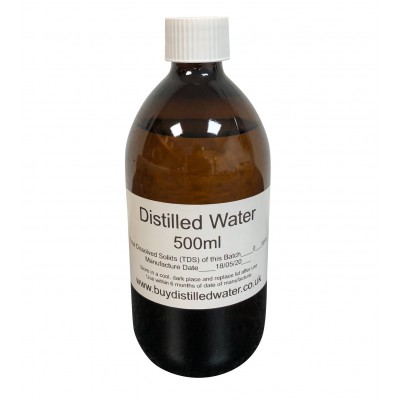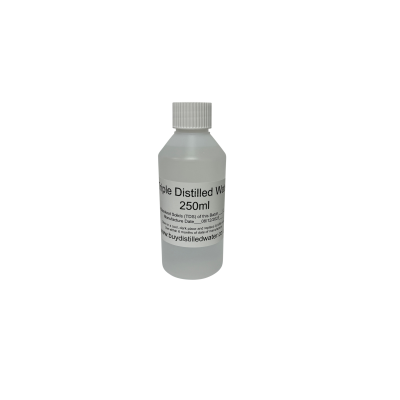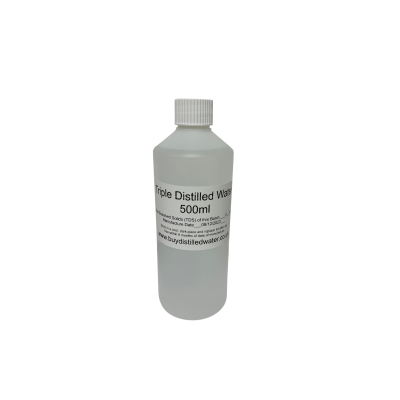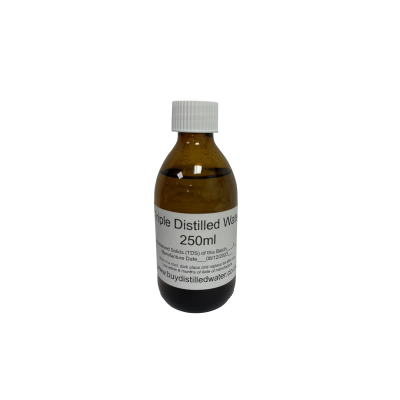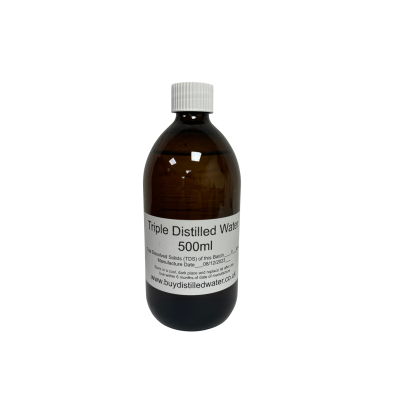Distilled Water has long been considered the purest form of water available. Whether you need Distilled Water for industrial machinery, medical settings, or household uses, distilled water provides a level of purity and consistency that regular tap water or deionised water cannot match. At Distilled Water Supplies, we pride ourselves on delivering top-quality distilled water through a rigorous process of repeated condensation and evaporation cycles.
What is Distilled Water?
Distilled water is water that has undergone a thorough purification process using the principles of evaporation and condensation. The water is boiled until it becomes steam; the steam is collected in a separate container, cooled, and returned to its liquid state. Because most impurities—including minerals, metals, waste materials, and bacteria—are heavier than the water molecules, they remain behind during the evaporation stage.
As a result, our ultra-pure distilled water can achieve a purity level of less than 1 part per million (ppm) of dissolved solids. The pH level of freshly distilled water typically hovers just below 7, though it can shift slightly if exposed to carbon dioxide in the air. The process can be repeated multiple times, in the case of our triple-distilled water, to achieve even higher purity if required for very specialised applications.
Based on the principal that the vast majority of minerals, metals, waste materials and bacteria found in water are heavier than the molecules of the water itself, the distillation process takes place when water is boiled in a distiller and the waste materials principally salts, calcium and other ions as well as bacteria remain in the boiling chamber while the pure water in the form of steam transfers to the collection chamber where it is allowed to cool off and return it's natural liquid state. Once this process has been completed the distilled water is tested for levels of purity.
The unit of purity (of dissolved solids) is usually PPM - Parts Per Millions, and represents to number of molecules of impurities dissolved in the pure water. Depending on the levels of contamination and the levels of pureness that need to be achieved, it is possible that the process will be repeated as many as three or four times until almost all impurities have been removed from the water.
Distilled water produced using this tried and trusted method will contain an exceptionally high percentage of water molecules and an absolutely minimal presence of other gases, minerals, salts or contaminants. The principal reason why distilled water is produced is for industrial applications where water purity levels need to be very high.
Natural water is known to build up levels of minerals which can cause damage to machinery over a relatively short space of time. Whilst distilled water is that bit more expensive, in the long term, is can be a very good investment for industrial companies to use distilled water and save costly downtime. The process involved in distilling water can be quite lengthy and energy intensive. However, in recent years advances have been made in the development of multi-effect evaporators that have been found to significantly reduce energy requirements over the traditional single evaporation units that have been in use since water distillation became common practice.
The multi-effect distillation process has been designed take considerable advantage of the laws of thermodynamics. By reducing the pressure in the condensation container the boiling temperature of water in the container will be considerably decreased using this method the heated water is introduced at considerably lower pressures. Consequently vaporising at a reduced temperature considerably reducing, energy required for heating.
Through using this method, water distillation can be more efficient due to increased levels of water evaporation whilst using the same levels of energy input.
Benefits of Distilled Water
- Unmatched Purity: Because the water undergoes one or more evaporation-condensation cycles, it reaches extremely low levels of total dissolved solids. This is especially beneficial in environments where even minor impurities can cause major issues, such as in laboratories or high-end manufacturing processes.
- Reduced Risk of Contamination: The high temperature required to boil water helps kill bacteria, viruses, and other pathogens, providing another layer of safety.
- Longer Equipment Lifespan: Minerals and scale buildup from regular tap water can corrode or clog machinery over time. Using distilled water in industrial or laboratory equipment helps minimise maintenance and extend equipment life.
- Consistent Quality: Whether for medical, industrial, or household use, the consistent purity of distilled water ensures repeatable results—particularly important for scientific and manufacturing procedures.
- Versatile Applications: Distilled water can be used in everything from irons and humidifiers to automotive cooling systems and battery maintenance, preventing mineral deposits that might otherwise accumulate.
IN STOCK NOW! Our 500ml bottle of Distilled Water - Perfect for use at home in steam irons, humidifiers, steam generators etc.
IN STOCK NOW! This handy 1 Litre bottle size is perfect for regular home users as well as 'one-off' research and testing purposes.
IN STOCK NOW! Our 2 litre Distilled Water bottle is more economical that our 1 litre bottles, but still very easy to carry and pour. It comes complete with a tamper-evident screw cap
IN STOCK NOW! Our 250ml bottle of Distilled Water - Perfect for use at home in steam irons, humidifiers, steam generators etc.
Please note: A minimum of 4 x 250ml bottles must be ordered
Our 250ml amber glass bottle of Distilled Water is ideal for making Colloidal Silver and mixtures that need protection from sunlight. Choosing our Distilled Water in amber glass bottles offers numerous benefits, making it an excellent choice for those seeking longer term storage options. Amber glass effectively blocks harmful UV rays, preserving the water's purity for longer.
The glass bottle is also fully reusable for home made cosmetics and tinctures.
Our 500ml bottle of Distilled Water complete with easy dispense twist nozzle - Perfect for use at home in steam irons, humidifiers, steam generators etc.
Our handy 1 Litre bottle complete with 'spray' and 'jet' trigger spray. Perfect for regular home users as well as testing purposes.
Pure, Distilled Water - Now Available in 5 Litre Containers
IN STOCK NOW! Our 5 litre Distilled Water drum is economical, yet easy to carry and pour. Our 5 litre bottles have an integral handle and are designed to be easy to transport and store. The larger size makes them perfect for larger applications, while still being light enough to carry.
Each of our 5 litre distilled water bottles is equipped with a tamper-evident screw cap, making it easy to tell if the bottle has been opened. These food-grade HDPE containers are certified BPA-free.
Distilled water is the purest form of water available. Unlike filtered water, distilled water goes through a 6-stage process that removes impurities, sediment and minerals. As a result, it's far purer than any other type of water.
IN STOCK NOW! Our 25 litre Distilled Water drum is the most economical way to buy ultra pure distilled water from us. Perfect for jobs requiring large volumes such as research laboratories and industrial processes. The drum is made from food-grade HDPE and comes complete with a tamper-evident screw cap. For additional savings on larger orders, we can send the drums on a pallet to reduce packaging and delivery charges - Palletised delivery is available on quantities from 9 drums (see below).
Buy 25 litre drums of distilled water directly from the manufacturer. We use our own proprietary 6-step method to ensure our water is of the highest quality and it undergoes UV sterilisation prior to bottling to further reduce potential bacteria. Our water is 100% steam distilled, not just filtered, deionised, or reverse osmosis water. After you buy distilled water from us, keep the drum sealed and away from sunlight, storing it between 15-25°c.
The latest addition to our range of waters. This triple distilled water is batch made in laboratory glassware for applications requiring the highest purity levels. Water is distilled on day of dispatch for maximum freshness.
A robust and hard wearing dispensing tap that can be screwed directly on to our 25 litre drums for precise and accurate pouring.
This 500ml amber glass bottle of Distilled Water is ideal for making Colloidal Silver and mixtures that need protection from sunlight
IN STOCK NOW! 250ml bottles of our triple distilled water - Perfect for use at home for applications requiring ultra pure distilled water that has undergone distillation three times.
Triple Distilled Water improves on the purity of our regular distilled water. By undergoing the distillation process three times, each cycle further refines and purifies the water, ensuring that any remaining impurities are meticulously removed. Our triple process guarantees a level of purity that is unparalleled, making it an ideal choice for a variety of uses such as making colloidal silver and homemade cosmetics and soaps, ensuring that the final products are free from any impurities that could irritate the skin.
IN STOCK NOW! 500ml bottles of our triple distilled water - Perfect for use at home for applications requiring ultra pure distilled water that has undergone distillation three times.
Triple Distilled Water improves on the purity of our regular distilled water. By undergoing the distillation process three times, each cycle further refines and purifies the water, ensuring that any remaining impurities are meticulously removed. Our triple process guarantees a level of purity that is unparalleled, making it an ideal choice for a variety of uses such as making colloidal silver and homemade cosmetics and soaps, ensuring that the final products are free from any impurities that could irritate the skin.
IN STOCK NOW! 250ml bottles of our triple distilled water - Perfect for use at home for applications requiring ultra pure distilled water that has undergone distillation three times.
Triple Distilled Water improves on the purity of our regular distilled water. By undergoing the distillation process three times, each cycle further refines and purifies the water, ensuring that any remaining impurities are meticulously removed. Our triple process guarantees a level of purity that is unparalleled, making it an ideal choice for a variety of uses such as making colloidal silver and homemade cosmetics and soaps, ensuring that the final products are free from any impurities that could irritate the skin.
IN STOCK NOW! 500ml bottles of our triple distilled water - Perfect for use at home for applications requiring ultra pure distilled water that has undergone distillation three times.
Triple Distilled Water improves on the purity of our regular distilled water. By undergoing the distillation process three times, each cycle further refines and purifies the water, ensuring that any remaining impurities are meticulously removed. Our triple process guarantees a level of purity that is unparalleled, making it an ideal choice for a variety of uses such as making colloidal silver and homemade cosmetics and soaps, ensuring that the final products are free from any impurities that could irritate the skin.

